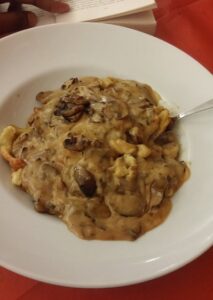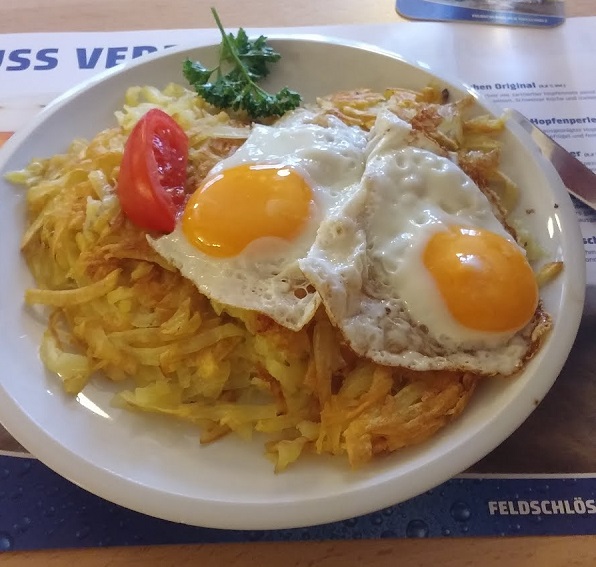“Come and explore Switzerland through food”
August 8 Pack your bags, get ready to go. Shastri Sookdeo, 28, a Commonwealth Correspondent from Trinidad now living in Amsterdam, takes you on a culinary journey to explore the best elements that Swiss cuisine has to offer.
Pack your bags, get ready to go. Shastri Sookdeo, 28, a Commonwealth Correspondent from Trinidad now living in Amsterdam, takes you on a culinary journey to explore the best elements that Swiss cuisine has to offer.
Rösti is considered to be the national dish of Switzerland. It’s a dish which has a lot of similarities with hash browns; as it consists of grated potato fried in a frying pan. It is thought to be highly representative of Swiss-German culture.
From my limited experience with German cuisine thus far, I must admit, I did not have high hopes for this dish. Traditional German cuisine seems to regard vegetables as only an accompaniment to the protein and requires little attention other than being boiled. I’m told the quality of the meat more than makes up for this culinary oversight, however, as a vegetarian, this is not of much use to me.
It’s rare to find a national dish that isn’t comprised of meat or fish. I saw this as a great opportunity. And proven wrong I was. The rösti is quite tasty.
I chose Rösti und Spiegelei which really could be easily mistaken for hash browns and sunny side up eggs from an American diner. This rösti, however, was superior to hash browns for two main reasons: the potatoes were fried in butter and herbs were well-deployed as seasoning.
 Another dish I was told as quintessentially Swiss was späztle. I’m a little bit uncertain of that claim because I’ve had something similar when I was in Hungary. The only difference is they call it galuska. The dish consists of short pieces of pasta about two inches long. The consistency is somewhere between floury noodles or less floury dumplings.
Another dish I was told as quintessentially Swiss was späztle. I’m a little bit uncertain of that claim because I’ve had something similar when I was in Hungary. The only difference is they call it galuska. The dish consists of short pieces of pasta about two inches long. The consistency is somewhere between floury noodles or less floury dumplings.
I tried Käsespätzle which is späztle mixed with cheese and fried onions. The späztle is already chewy and so the mixture with cheese can be a bit difficult to chew but it works well with onions. I also tried späztle with mushroom sauce. That combination was the best meal I had in Switzerland.
The cuisine of Zurich seems to be mostly German, as would be expected, but also incorporates elements of Italian cuisine, too. For example, the use of basil and oregano really allow for the food to be exceptionally flavoured. What’s nice is that the vegetables and pasta have also managed to be infused with good flavor and aren’t just a forgotten support act.
Photo credit: courtesy of Shastri Sookdeo
…………………………………………………………………………………………………………………
About me: I most recently worked as an operations analyst with a focus on procurement. My interests are sports, foreign languages, travel and cooking. My studies in finance have also given me a fascination for currency markets and international trade.
My ambition is to be able to travel extensively and attempt to document and describe the intricacies of the many diverse sporting and culinary cultures across the world.
…………………………………………………………………………………………………………………
Opinions expressed in this article are those of the author and do not necessarily represent the views of the Commonwealth Youth Programme. Articles are published in a spirit of dialogue, respect and understanding. If you disagree, why not submit a response?
To learn more about becoming a Commonwealth Correspondent please visit: http://www.yourcommonwealth.org/submit-articles/
…………………………………………………………………………………………………………………




